The automotive landscape was very different a decade ago. Back then, it was only a choice between diesel and gasoline. Back then, electrification was just a pipe dream, a distant future I was only reading about on global automotive news. Back then, the only electrified cars you can buy in the country were the Toyota Prius hybrid, which entered the Philippines in 2009. Back then, electric vehicles have yet to become a local reality.
As we turn to the next page of this industry’s journal, let’s talk about the once-distant future that has been, albeit, slowly, turning into the present, reflecting a global trend: electrification.
“There has been a massive jump in EV adoption worldwide during the past year. Sales of electric vehicles (EVs) doubled in 2021 from the previous year to a new record of 6.6 million. Back in 2012, just 120,000 electric cars were sold worldwide. Nearly 10% of global car sales were electric in 2021, four times the market share in 2019. This brought the total number of electric cars on the world’s roads to about 16.5 million, triple the amount in 2018. Global sales of electric cars have kept rising strongly in 2022, with 2 million sold in the first quarter, up 75 percent from the same period in 2021,” said Electric Vehicle Association of the Philippines (EVAP) President Edmund Araga, citing the 2022 Global EV Outlook of the International Energy Agency.
There have been several new developments locally at this point, primarily the new Electric Vehicle Industry Development Act (EVIDA) that took effect on September 20, 2022. In one way or another, the local automotive industry is now more dynamic than ever despite being a tad too late in comparison to the rest of the world.
With the Philippine Electric Vehicle Summit (PEVS) on its way for its 10th installation on October 20, 2022, let’s look back at the developments within the EV industry over a decade.
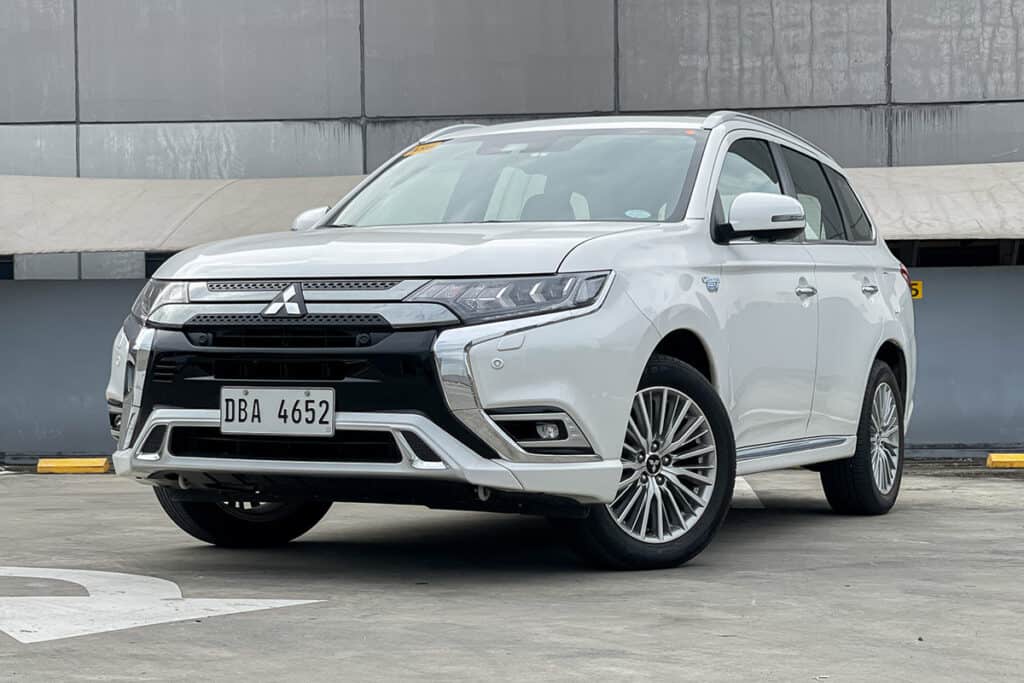
Plethora of Choices
There are now several electrified cars in the market, classified as hybrids, plug-in hybrids, mild hybrids, and pure electric. Hybrids and mild hybrids don’t require charging stations, while plug-in hybrids do give you an option between letting the internal combustion engine (ICE) do the charging or plugging in. Pure electric vehicles, as discussed, require charging.
Major players in the electrified industry will make their appearance at the 10th PEVS, showcasing what they have in store for the future. Nissan, one of the first companies to bring a fully-fledged EV into the country, will be present with its LEAF. A new electrified model has also been added to NPI’s lineup, the Kicks e-Power, albeit this one doesn’t need charging. Its alliance-mate, Mitsubishi, has the Outlander PHEV in its arsenal.
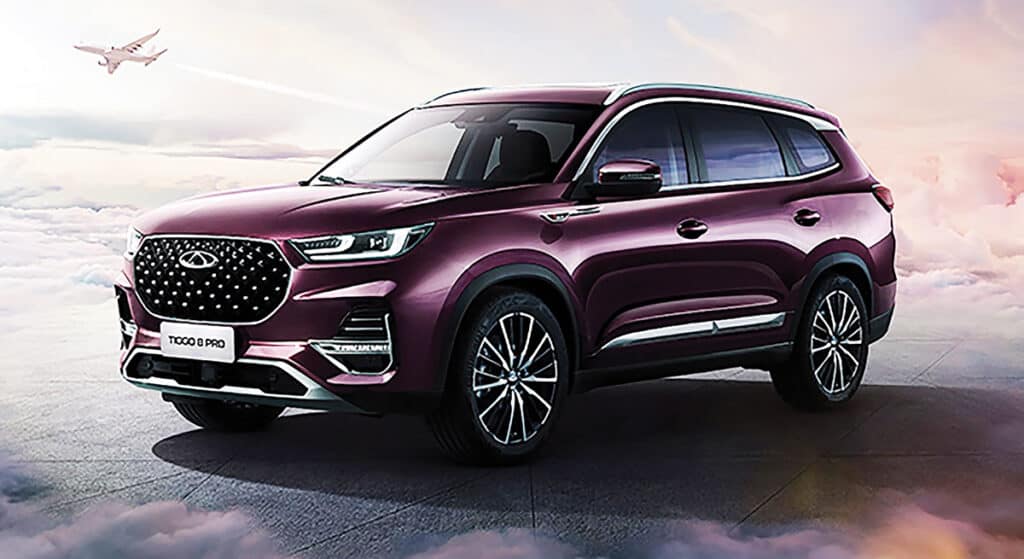
Meanwhile, Chery Philippines has already joined the local trend with the introduction of the Tiggo 8 Pro PHEV at the 2022 Manila International Auto Show. Combining best-in-class features and the efficiency of a plug-in hybrid powertrain, Chery wants to sway midsize SUV buyers into a more practical offering. A full-fledged EV is available in Chery’s lineup as well—the Arrizo 5e electric sedan is available via indent order.
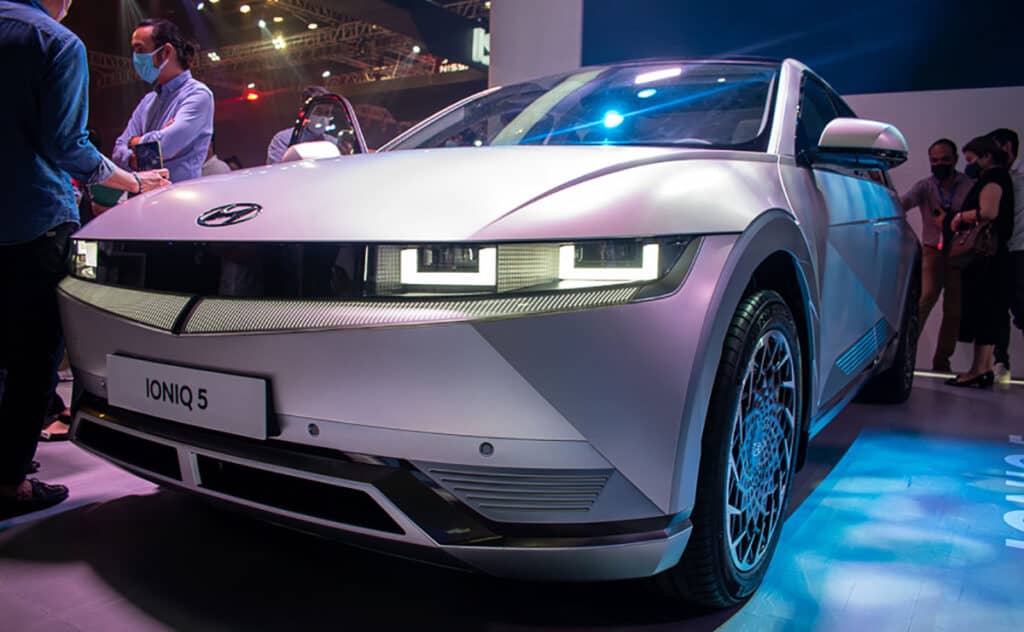
Following its impactful rebirth in the local market, Hyundai Motor Philippines has previewed its foray into the local EV market with the Ioniq 5 during the Philippine International Motor Show (PIMS). Its platform-mate, the Kia EV6, also made an appearance at PIMS. The Ioniq 5 is set to make a comeback at the 10th PEVS.
BYD, or Build Your Dreams, has an electrified lineup that includes the Tang SUV (also available as a hybrid), Dolphin hatchback, Han sports sedan, and T3 van. Weltmeister or WM has also launched locally this July 2022, aiming to storm the market with its pure EV lineup.
Toyota Motor Philippines has been leading the way when it comes to its hybrid offerings, which include its premium brand, Lexus. Current hybrid models available locally are the Toyota Prius, Corolla Altis HEV, Corolla Cross HEV, RAV4 HEV, and Camry HEV, as well as the Lexus IS 300h, ES 300h, LS 500h, NX 350h, and RX 450h.
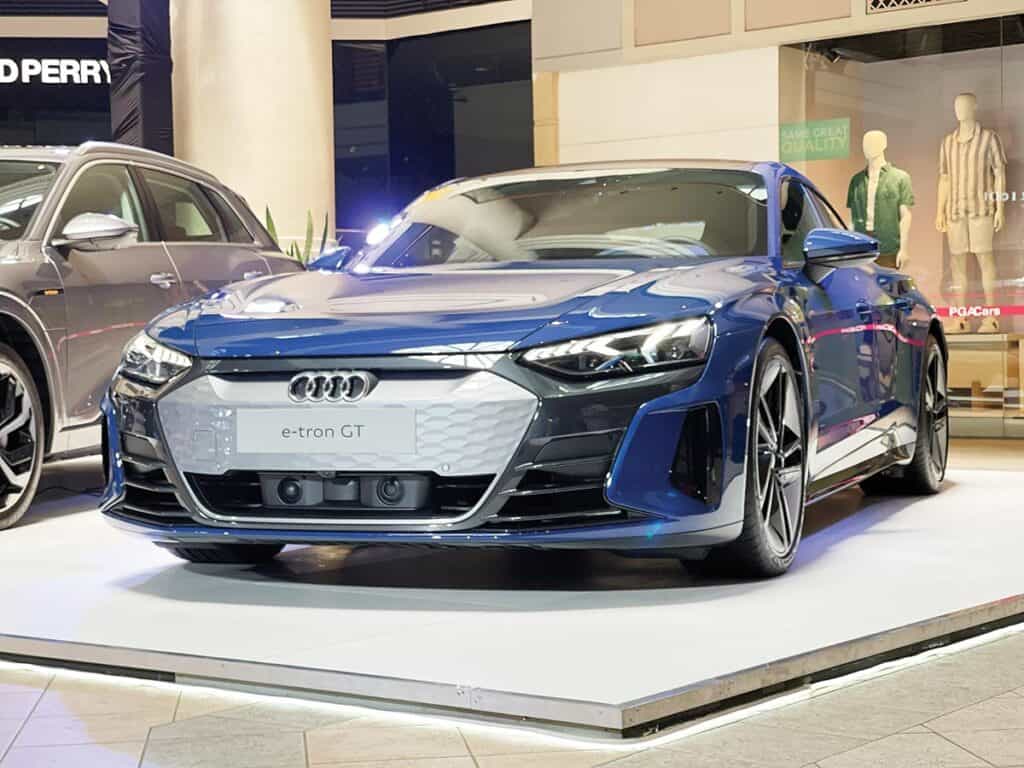
For the premium ones, Maserati is also selling the Ghibli and Levante hybrid models, while Volvo refreshed its lineup last April to include hybrid versions of its luxurious Swedish vehicles. The Jaguar I-Pace is available for P7.59 million. PGA Cars bolsters its electric lineup with the Porsche Taycan, along with the Audi e-Tron GT and e-Tron SUV. Another German marque joined the premium EV segment in 2022 in the form of the BMW iX SAV.
A charge forward
To kick off the 10th PEVS, the EV Owners Society (EVOS) will be holding a motorcade on the morning of October 20, 2022, showcasing the latest means of electric mobility around the Mall of Asia (MOA) Complex. EVAP will unveil a new logo as well.
The recently promulgated EVIDA Implementing Rules and Regulations (EVIDA-IRRs) will be presented by the Department of Energy (DOE) during the event together with the other concerned government agencies namely the DILG, DOST, DOTr, DTI, ERC, and LTFRB discussing their specific roles in the implementation of EVIDA.
The EVIDA seeks to incentivize the rapid adoption of electric vehicles and charging stations in the country. It mandates a 5% EV share in corporate and government fleets, dedicated parking slots for EVs, installation of charging stations in parking lots and gasoline stations, green routes in cities and municipalities, as well as fiscal and non-fiscal incentives for EV manufacturing, charging station importation, and EV utilization.
Charging networks
Charging infrastructures in the Philippines are still not as widespread as in western countries. However, we have recently taken a major step forward, courtesy of Pilipinas Shell.
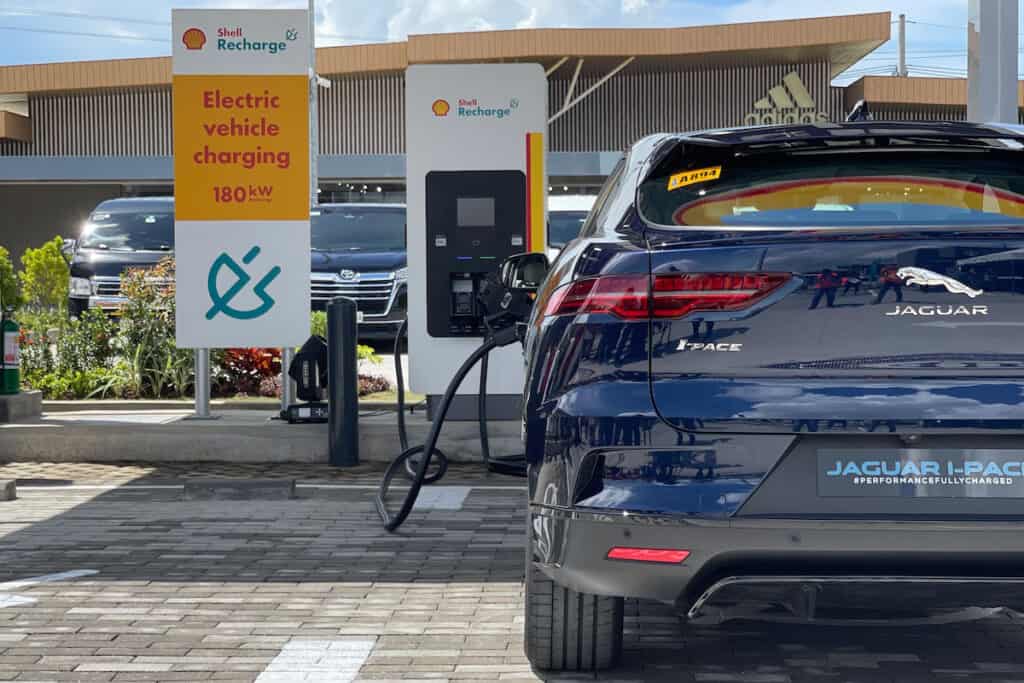
Shell has opened the Shell Recharge Station – the company’s first EV charging station. Strategically located in Shell Mamplasan along South Luzon Expressway, the EV charging station is a 180-kilowatt DC (direct current) fast charger capable of servicing two vehicles simultaneously.
There is one caveat, though. Shell’s fast charger uses CCS2 connectors, usually seen in European car brands like Porsche, Audi, and Jaguar, among others. If you own a Nissan LEAF or a Mitsubishi Outlander PHEV, you won’t be able to top up your car’s battery via the Shell Recharge Station. The company, however, confirmed that the future Shell Recharge Stations in the country might have different types of connectors, with the aim to develop an inclusive charging network in the country. Somewhere between 3 and 10 Shell Recharge Stations will be opened this year in Luzon, the company confirmed.
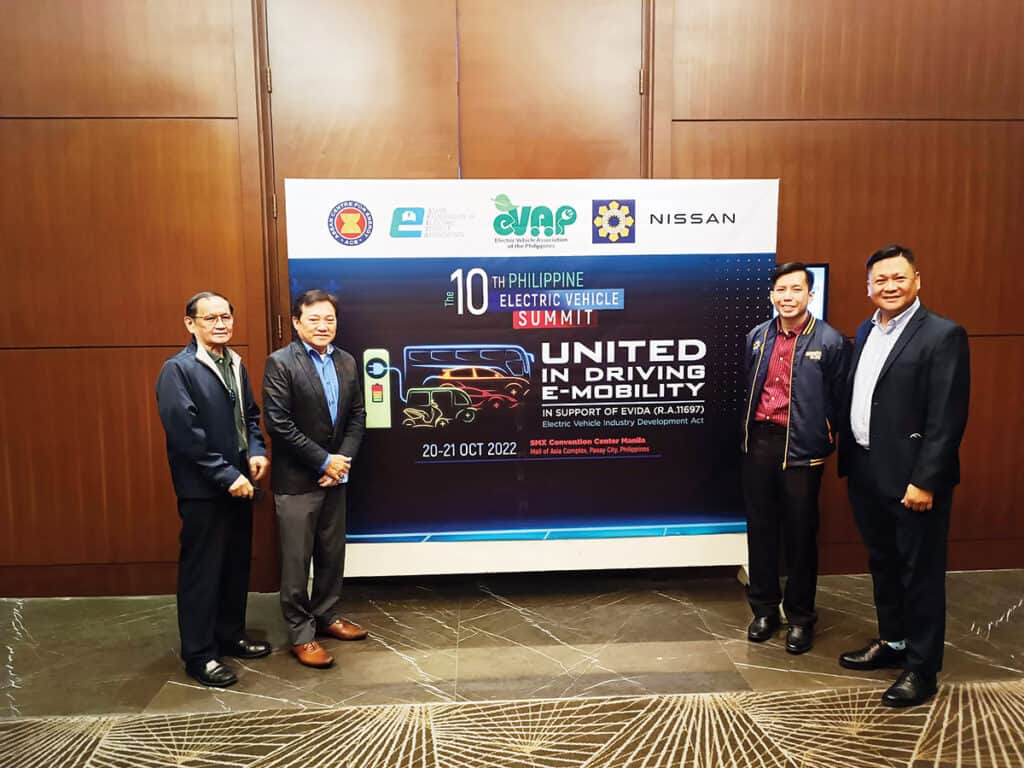
And that’s the major hurdle among charging stations, not only in the Philippines but also globally. There isn’t a standard among car brands yet, with the current least number of DC charger connectors now at five, depending on the car brand. Unfortunately, these charger connectors are incompatible with each other.
Then there’s the question of pricing. The Shell Recharge Station asks for P65 per minute of charging. This isn’t as pricey as you’d initially suspect, as the average time to “fill up” an EV is 30 minutes (depending on the battery type and capacity). And rightfully so, as the transitionary state isn’t cheap, mind you. Of note, the cost to put up a DC charging station would be upward of a million pesos.
Meanwhile, the other DC charging stations are found in the Unioil station along EDSA near Guadalupe, and in Nissan dealerships that sell and service the LEAF. Both use the CHAdeMO type of connector. The newly opened Chery Commonwealth also boasts a charging station. Meanwhile, the charging stations found in SM Malls are the AC type, which means you’ll have to leave your car for hours for a full charge.
Overall, we and the rest of the world are still in a transition period when it comes to standardizing the charging connections – much like when phones had different types of chargers before but are now transitioning to the more standardized USB Type-C connectors (hello, Apple iPhone).
However, we can’t deny that the movement in charging infrastructures locally is a substantial one, especially considering that it came from one of the three major providers of fossil fuel.
A transition point
Call it kismet or a fortunate happenstance, but the emergence of electrified vehicles couldn’t come at a better time: skyrocketing fuel prices.
But truth be told, the status of vehicle electrification in the country may not concern everyone at this point, given the impossibly high retail prices of electrified cars. We’re still at a transition point where the adaptation to EVs is but a privilege to a few.
At least it’s one step forward from what it was several years ago – and it won’t be too long before “range” and “charging times” become automotive jargon for the great many.
As they say, the future is here. Well, almost.

